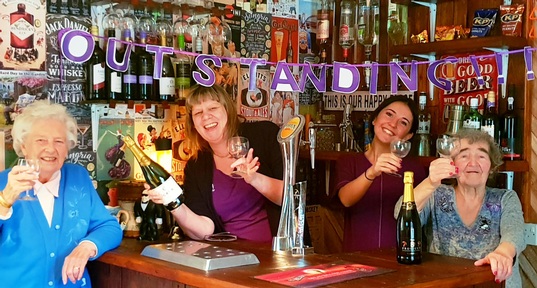Therapy alpacas 'comfort' dementia care home residents
A group of alpacas have been touring care homes in Bournemouth, Poole and Edinburgh, bringing comfort to residents with dementia.

Five of the alpacas were given a tour of various care homes by their handlers, and even visited residents in their bedrooms.
Oliver, Midnight Prince and Sirocco were welcomed by staff and residents at Bournemouth care home, Ferndown Manor, and at The Potteries, in Poole. There was also a ‘meet and greet’ with Amadeus and Calvin at Cairdean House in Edinburgh. All three homes are part of Care UK.
Many care homes have therapy pets such as guinea pigs and rabbits, and there is a high demand for visiting dementia dogs and therapy horses, but alpacas are still quite an unusual choice.
Zita Turner, home manager at The Potteries, said: “Not many residents had seen an alpaca before, and you could see from residents’ reactions just how fascinated they were by the chance to get up close to and pet the gentle-natured creatures.”
“It proved to be a real success, and the residents all enjoyed having a cuddle with Oliver and Sirocco as well as learning about how their fleece can be used to make all sorts of different clothing.”
Alpacas are becoming quite popular in the UK, because of their fleeces, temperament and they are even used by some farmers to protect sheep flocks from foxes. The British Alpaca Society estimates there are 41,400 currently registered with them, and there are around 7,000 more animals in the country owned by individuals as pets.
Gillian Goodall, home manager at Cairdean House, said: “Not only did the workshop fit really well with our ‘activity-based care’ approach here at Cairdean House, it was also fantastic to see the smiles on everyone’s faces, especially as it can have real therapeutic benefits for residents – particularly those living with dementia.”
Ferndown Manor home manager Janet Lewis said: “We are always looking to arrange interesting and exciting activities for residents and bringing pets such as cats and dogs into the home to meet residents has been proven to have many therapeutic benefits for older people.”
Latest Innovative Care News
 13-May-19
'Pink drink' brain cancer treatment rolled out across NHS in memory of Baroness Jowell
13-May-19
'Pink drink' brain cancer treatment rolled out across NHS in memory of Baroness Jowell
 25-Apr-19
Louis Tomlinson helps 83-year-old who lost wife to dementia complete bucket list
25-Apr-19
Louis Tomlinson helps 83-year-old who lost wife to dementia complete bucket list
 22-Mar-19
UK's top care home handyman takes residents to pub for pie and pint
22-Mar-19
UK's top care home handyman takes residents to pub for pie and pint
 12-Feb-19
Michael McIntyre's jokes tested to see if they stop elderly catching flu
12-Feb-19
Michael McIntyre's jokes tested to see if they stop elderly catching flu
 07-Jan-19
'We were lucky to find it': Family's delight as care home is rated Outstanding
07-Jan-19
'We were lucky to find it': Family's delight as care home is rated Outstanding